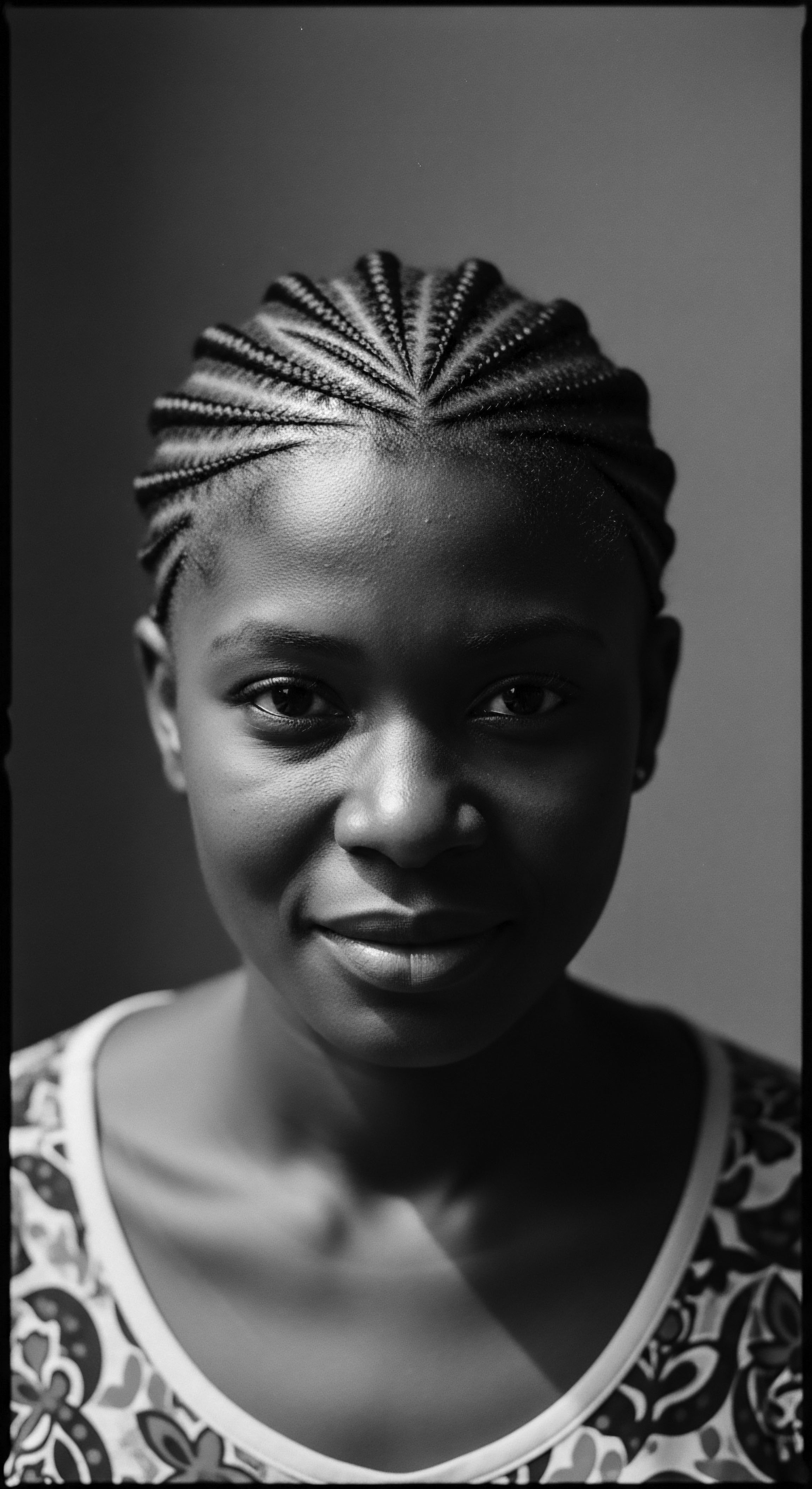
Roots
Feel the whisper of the earth beneath your feet, a memory held in the very strands that crown you. Our hair, particularly its textured expressions, carries a lineage far older than written histories, a deep genetic inheritance woven into the very fabric of our being. It speaks of ancient soils, sun-drenched landscapes, and the hands that first tended to it with knowing reverence. To truly comprehend the historical weight of braided hair in African cultures, one must first journey back to the elemental beginnings, understanding hair not merely as adornment but as a living record, a physiological testament to life itself.
The anatomy of textured hair, with its unique elliptical follicle shape and complex curl patterns, is a wonder unto itself, a biological signature honed over millennia. This specific structure, often coiling and winding, creates a density and resilience that has been both a source of strength and, tragically, a target of misunderstanding. From the earliest communal gatherings by ancestral hearths, the tending of this hair was more than routine; it was a sacred practice, a bonding ritual, a transfer of generational wisdom about its physical properties and spiritual import. Early African communities recognized the hair’s capacity to communicate, to protect, to represent one’s place within the societal cosmos.
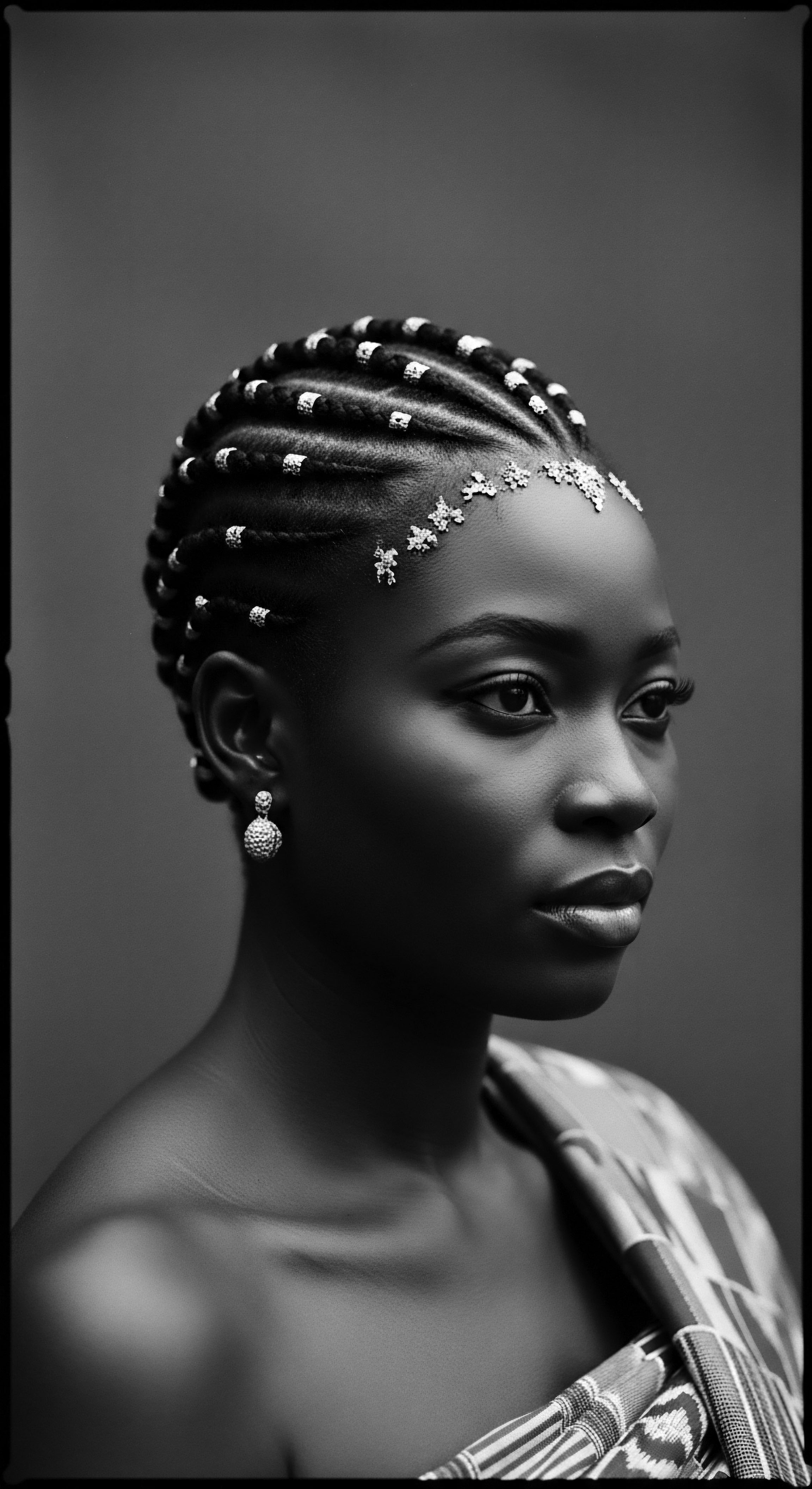
Hair’s Ancestral Blueprint
Consider, for a moment, the foundational understanding of hair within these early societies. They knew, intuitively, its vulnerability to environmental factors, its need for specific nourishment. They observed the hair’s growth cycles, how it shed and regenerated, connecting these natural rhythms to the greater cycles of life and death, of planting and harvest. This observation led to the development of early hair care practices, often involving natural oils, butters, and herbs, applied with purpose and intention.
The braiding of hair, then, became a direct extension of this deep biological and ecological awareness. It was a method to protect the delicate strands from harsh sun and dust, to keep it tidy for daily life, and to prepare it for ceremonies.
These elemental biological truths informed the foundational lexicon of textured hair. Terms for different curl types, for the act of braiding, for the tools used, emerged from a living language rooted in experience. These words held practical guidance and also carried the weight of cultural meaning, defining who one was and one’s place in the communal story. The very act of naming specific braid patterns, for instance, became a way to codify identity within a shared understanding, a visible language for the self and the collective.

Braids as a Cradle of Identity?
How did braided hair practices begin to shape community and individual self-perception from their earliest forms?
From the very dawn of African civilizations, the act of braiding transcended simple aesthetics. It became a profound social institution, a visible marker of community cohesion and individual identity. Children learned the patterns from elders, perpetuating traditions that stretched back countless generations. A young person might wear braids signifying their passage into adulthood, their readiness for marriage, or their status within a lineage.
Each style could speak volumes without a single word being uttered, a silent yet potent form of communication recognized by all members of the society. This ancient visual language provided context and connection, establishing a sense of belonging and order within the collective.
Braided hair in African cultures served as a living archive, communicating identity, status, and spiritual beliefs through its intricate patterns and adornments.
Moreover, the creation of these styles was often a communal activity. Women would gather, sometimes for hours, braiding each other’s hair, sharing stories, wisdom, and laughter. These gatherings were not just about hair; they were about fostering bonds, strengthening familial ties, and transmitting cultural values.
The tender touch of fingers weaving strands together created a tangible connection, a physical expression of care and solidarity that echoed the very structure of the braids themselves ❉ many individual strands uniting to form a stronger, more resilient whole. This ritualistic aspect solidified the hair’s role as a communal asset, deeply intertwined with the well-being of the collective.

Ritual
The journey from elemental care to the elaborate artistry of braided hair in African cultures speaks to a depth of human ingenuity and a profound connection to tradition. It was in the ritualistic application of these techniques that braided hair truly transcended its physical form, becoming a medium for spiritual expression, social commentary, and indeed, a canvas for storytelling. The hands that shaped these styles were not merely skilled; they were imbued with ancestral knowledge, transforming raw strands into a meaningful architectural statement.
The spectrum of braided styles across the African continent was, and remains, breathtaking in its diversity. From the tightly pulled cornrows of West Africa, mirroring agricultural patterns, to the towering coiffures of the Maasai, signifying tribal standing, each region, often each specific community, possessed a unique lexicon of patterns. These designs were not arbitrary; they often carried specific meanings, denoting, for example, a person’s age, marital status, social hierarchy, or religious affiliation. A particular braid pattern might announce a woman’s eligibility for marriage, or a man’s readiness for war.
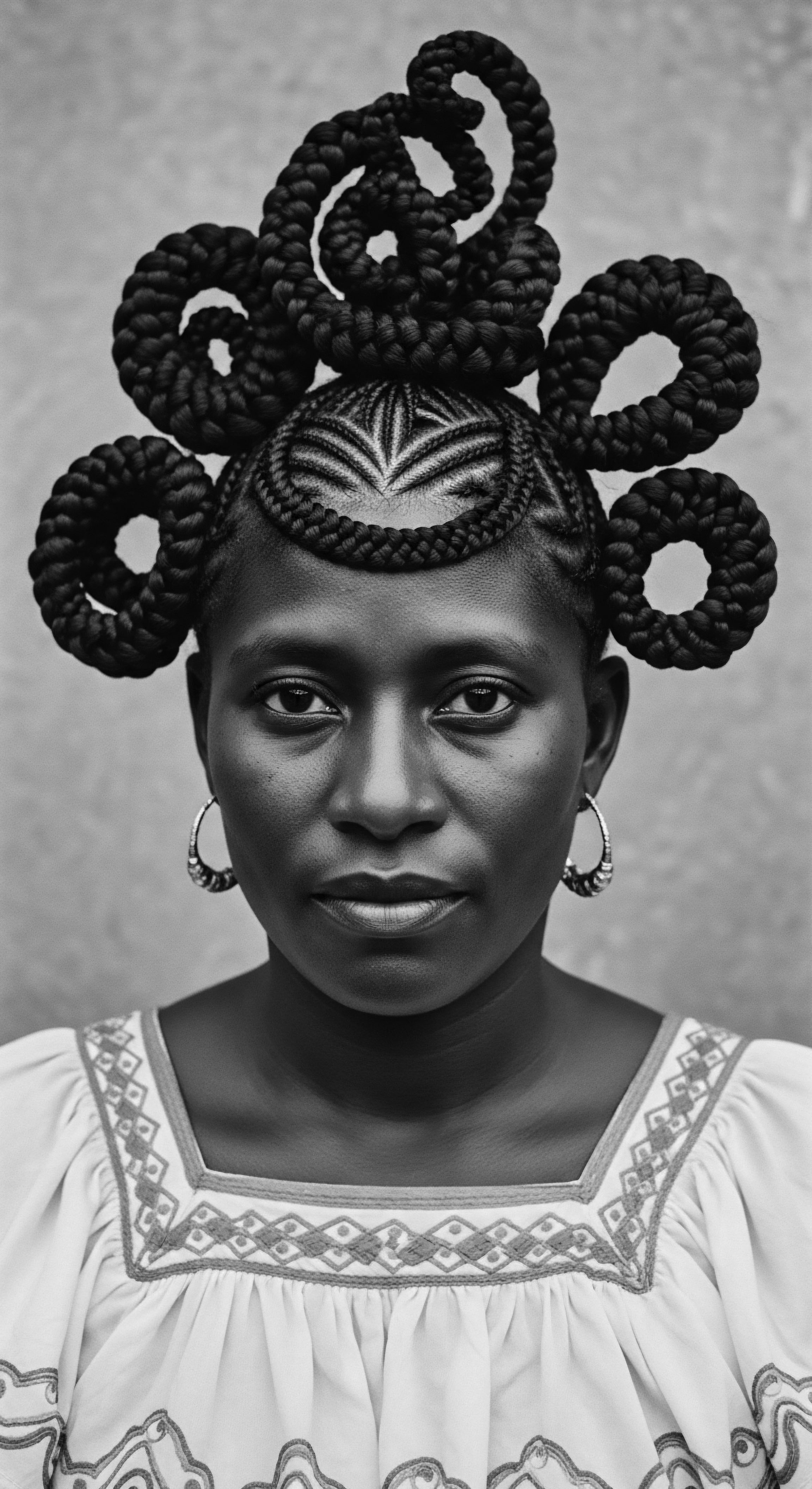
Techniques and Sacred Tools
The creation of these intricate styles involved a suite of tools, many of which were simple in their form but profound in their historical significance. Combs, often carved from wood or bone, were not just detangling instruments; they were extensions of the hands, capable of parting, lifting, and sectioning the hair with precision. Adornments played a significant role, too. Beads, cowrie shells, gold, silver, and plant fibers were meticulously incorporated into braids, not just for their decorative appeal but for their symbolic meaning, often representing wealth, spiritual protection, or affiliation with specific deities.
Consider the meticulous process involved in creating traditional braided styles. It required patience, a steady hand, and a comprehensive understanding of the hair’s texture and behavior. The braiding was often a slow, deliberate act, a time for quiet reflection or lively conversation.
The choice of pattern, the direction of the braids, and the type of adornment were all carefully considered elements, contributing to a holistic statement about the individual’s place in the world and their connection to their heritage. This dedication to craft elevates the practice beyond mere beauty to a form of living art, a tangible link to a long and unbroken chain of ancestral skill.

How Did Braids Reflect Identity in Specific Cultures?
The expression of identity through braided hair manifested in countless ways, each reflecting the distinct worldview of a particular African culture.
Among the Yoruba people of West Africa, for instance, certain braided patterns, such as the Suku (basket-like braids), were traditionally worn to signify prosperity and good fortune, often adorned with cowrie shells or coral beads. These styles were not merely aesthetically pleasing; they were imbued with spiritual significance, believed to attract blessings and reflect the wearer’s devotion to their orishas, or deities. The creation of such styles was a communal event, often performed by skilled practitioners whose hands were considered conduits of ancestral wisdom.
Braided hair in African cultures was a living textile of social meaning, a visual dialect understood by all who recognized its patterns and adornments.
In contrast, the Himba women of Namibia are renowned for their elaborate Otjize paste, a mixture of ochre, butterfat, and aromatic resins, applied to their hair and skin. Their dreadlocked braids, stiffened with this paste, are a powerful symbol of their culture, age, and status. Young girls might wear simple braids, while married women adorn theirs with intricate headpieces and symbolic ornaments.
The process of applying the otjize and tending to these braids is a daily ritual, deeply tied to their nomadic lifestyle and spiritual connection to the land and their ancestors. This distinct practice highlights the regional variations and the profound embeddedness of hair traditions within a culture’s very way of life.
- Yoruba Suku ❉ Symbolized prosperity and spiritual devotion, often embellished with cowrie shells.
- Himba Otjize Braids ❉ signified cultural identity, age, and marital status, created with ochre and butterfat.
- Fula Braids ❉ Distinguished by a central braid often worn down the forehead, indicating status and beauty among women.
These are but two examples among a vast continent, each demonstrating how braided hair served as a nuanced language, a visual lexicon for personal and collective identity, far beyond simple vanity.
| Culture or Region Yoruba (West Africa) |
| Traditional Braiding Practice Suku (basket braids), Eko Bridge styles |
| Key Social or Spiritual Significance Prosperity, spiritual connection, social standing |
| Culture or Region Himba (Southern Africa) |
| Traditional Braiding Practice Otjize-coated braids |
| Key Social or Spiritual Significance Age, marital status, cultural identity, spiritual purity |
| Culture or Region Maasai (East Africa) |
| Traditional Braiding Practice Thin, elongated braids for men and women |
| Key Social or Spiritual Significance Warrior status (men), age, beauty, ceremonial readiness |
| Culture or Region Fula (West Africa) |
| Traditional Braiding Practice Distinct central forehead braid, intricate side designs |
| Key Social or Spiritual Significance Beauty, grace, sometimes indicating wealth or status |
| Culture or Region These examples reflect a small part of the rich and varied heritage of braided hair across African cultures. |

Relay
The historical significance of braided hair in African cultures extends far beyond its initial artistic or communal functions. Over centuries, these styles became powerful instruments of communication, resilience, and even survival, particularly in the face of immense adversity. The very act of shaping and maintaining braided hair served as a silent, yet formidable, resistance against forces that sought to strip away identity and heritage. This deeper consideration unveils how these traditions were not static museum pieces but dynamic, living forms of cultural practice.
During the transatlantic slave trade, when African peoples were forcibly displaced and brutalized, braided hair took on a profoundly strategic role. The intimate practice of hair styling became a clandestine means of conveying information, a vital link to ancestral wisdom in a world designed to obliterate it. Enslaved individuals, separated from their lands and kin, utilized their hair as a medium for encoded messages, a quiet act of defiance against oppression.
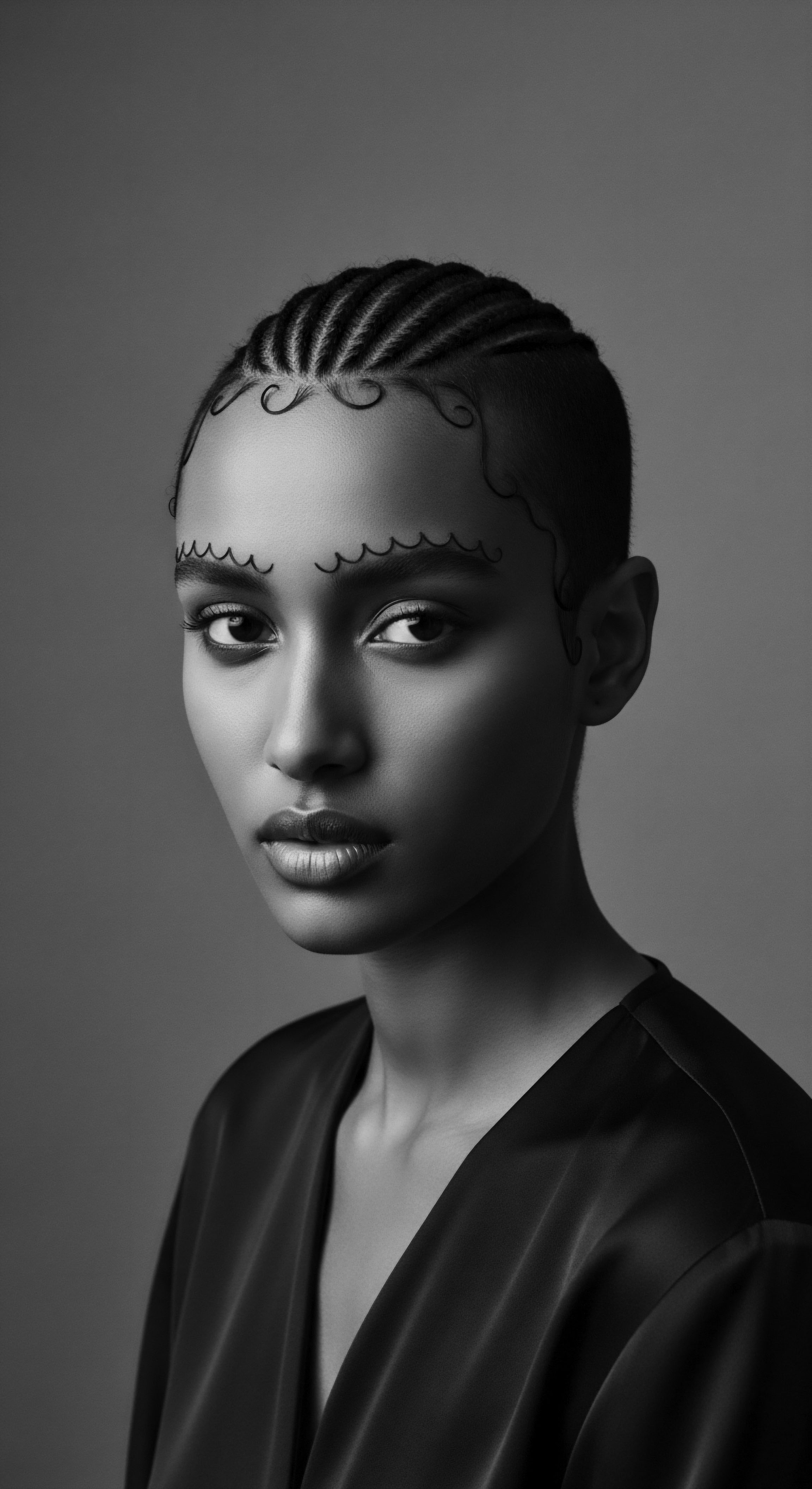
Braids as Tools for Survival?
How did braided hair become a tool for survival and resistance during periods of profound upheaval?
A compelling, albeit harrowing, historical example illustrates this ❉ in parts of Colombia, during the brutal era of slavery, enslaved Africans braided rice grains into their cornrows before escaping plantations. This ingenious method allowed them to carry vital food supplies for their perilous journeys to freedom, often into the mountainous regions where they established Maroon communities. The intricate patterns of the braids themselves could also serve as maps, indicating escape routes through dense forests or pointing towards safe havens.
Emma Dabiri, in her 2020 work, “Don’t Touch My Hair,” details how this practice provided a tangible link to survival and freedom, transforming a cultural tradition into a life-saving strategy (Dabiri, 2020). This specific instance demonstrates the extraordinary adaptive capacity of braided hair as a vessel for ancestral knowledge and collective resistance, allowing people to carry their future, literally, upon their heads.
Braided hair, particularly during enslavement, became an encoded language of survival, storing food and mapping escape routes to freedom.
The resilience embedded within these practices extended beyond physical survival. It encompassed the preservation of cultural memory, a refusal to let go of identity despite systematic dehumanization. Maintaining traditional hairstyles, even in the face of mockery or prohibition, became a quiet yet powerful affirmation of selfhood, a declaration of belonging to a lineage that predated and would outlast their captors’ tyranny. The shared experience of braiding, often still a communal activity in secret, fostered a sense of solidarity and continuity.
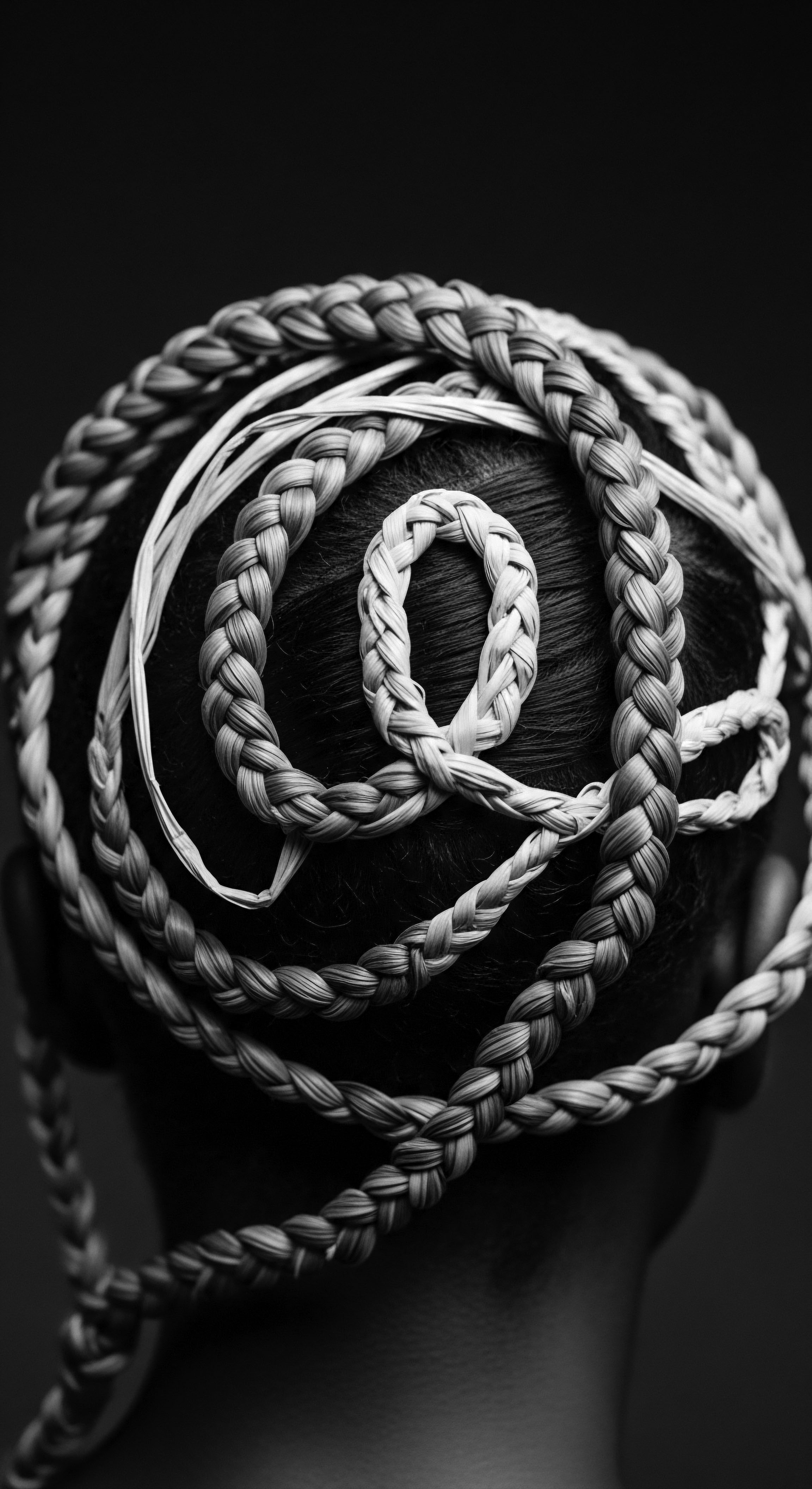
The Enduring Science of Protective Styles
From a scientific perspective, the widespread adoption of braids as protective styles across African cultures centuries ago is a testament to an intuitive understanding of hair health. Braiding minimizes manipulation of individual strands, reducing breakage, split ends, and overall wear and tear. This practice shelters the hair from environmental stressors like sun and wind, and locks in moisture, which is especially important for the naturally drier texture of many Black and mixed-race hair types.
Modern trichology validates these ancient practices. We now understand the mechanical stress that constant combing and styling can place on the hair shaft, particularly at the points where the hair emerges from the scalp. Braids, when installed with care and without excessive tension, alleviate this stress, allowing the hair follicles to rest and the hair shaft to maintain its structural integrity.
This deep ancestral wisdom, refined over generations, provided a practical solution for hair preservation long before modern scientific terms existed to explain its efficacy. It is a striking example of traditional care rituals aligning with contemporary scientific understanding.
- Reduced Manipulation ❉ Braiding minimizes daily pulling and combing, lessening mechanical stress on the hair shaft.
- Environmental Protection ❉ Braids shield hair from harsh elements, including UV radiation and particulate matter.
- Moisture Retention ❉ Trapping natural oils and applied products helps to keep hair hydrated and supple.
- Growth Longevity ❉ By preventing breakage, braids allow the hair to reach its full growth potential.
| Ancestral Observation Braids keep hair "safe" from daily damage. |
| Modern Scientific Corroboration Reduces mechanical stress, minimizing breakage and split ends. |
| Ancestral Observation Hair feels moisturized within braids. |
| Modern Scientific Corroboration Encloses hair, helping to retain natural sebum and applied emollients. |
| Ancestral Observation Braids allow hair to grow long. |
| Modern Scientific Corroboration Minimizes physical stressors, allowing hair to reach its anagen phase potential. |
| Ancestral Observation The enduring practice of protective braiding stands as a powerful demonstration of ancient hair care principles validated by contemporary science. |
This historical continuity, from ancient communal styling to a tool of liberation, underscores the profound and multifaceted heritage of braided hair. It is a tradition that has consistently adapted, survived, and delivered, carrying meaning, memory, and practical benefit across generations.
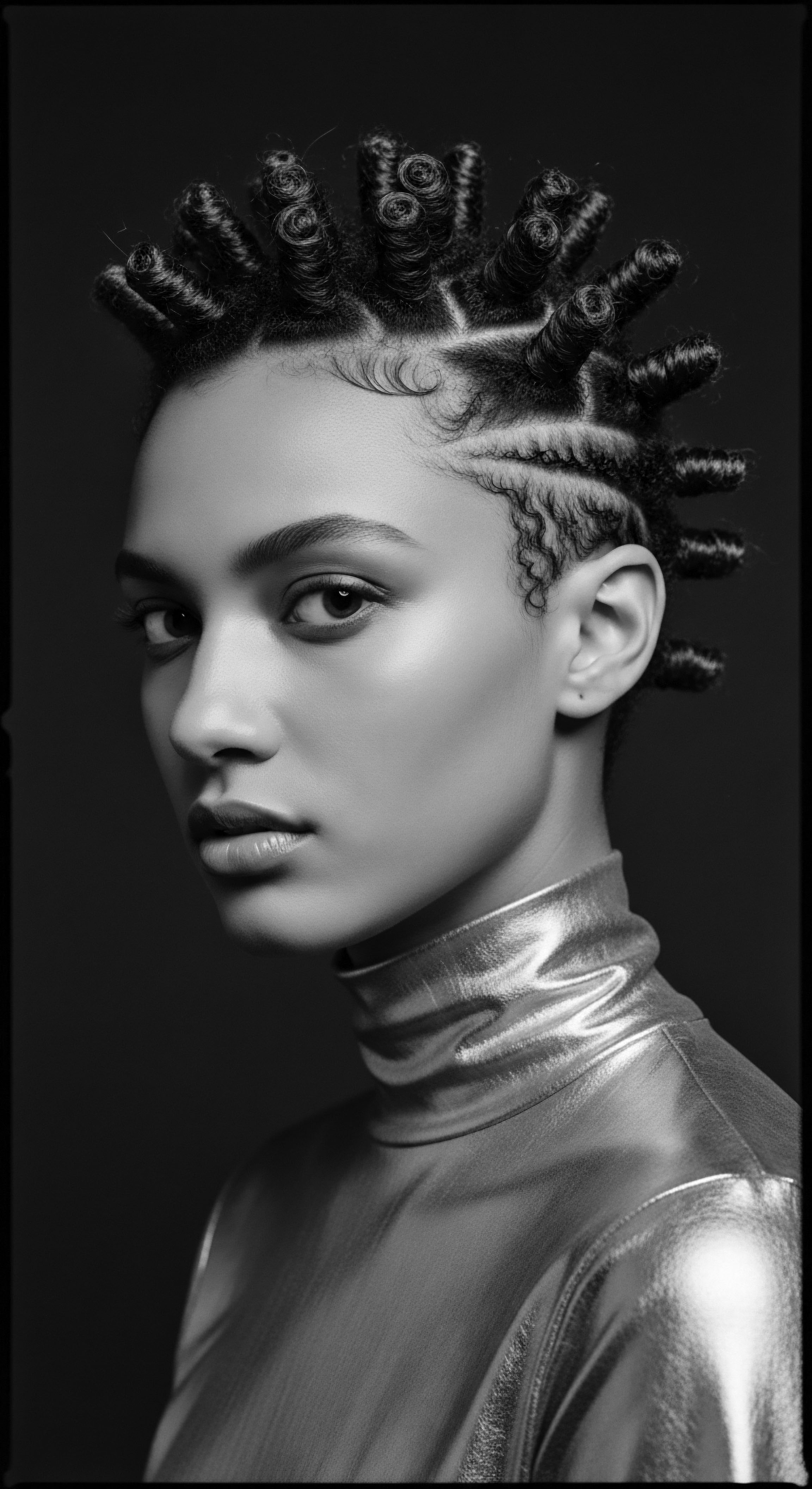
Reflection
The echoes of braided hair in African cultures reverberate through time, a testament to its enduring power and meaning. From the gentle touch of an elder’s hands transmitting care and stories, to the silent language of resistance etched into intricate patterns during times of profound struggle, braids stand as an unbreakable link to ancestral wisdom and a vibrant, living heritage. They are not merely strands entwined; they are pathways to understanding, channels through which the spirit of a people has consistently expressed itself, survived, and indeed, thrived.
Our exploration has journeyed through the elemental biology of textured hair, recognizing how its unique structure found protection and expression in the braided form. We have witnessed the ritualistic beauty of communal styling, where each plait and coil spoke volumes about identity, status, and spiritual connection. And we have stood in awe of its strategic utility, its silent strength in the face of unimaginable hardship. Braided hair, then, represents a profound meditation on interconnectedness—between self and community, past and present, wisdom and survival.
For those of us who carry this textured hair heritage, the legacy of braided hair is a profound invitation. It is a call to recognize the deep history held within each strand, to honor the hands that came before us, and to appreciate the resilience woven into every pattern. This understanding empowers us, not simply to care for our hair, but to connect with a powerful stream of ancestral knowledge, a living archive of identity and fortitude. The story of braided hair in African cultures is a testament to the enduring power of human spirit, creativity, and the unbreakable bond of heritage, continuing to guide and inspire us to this very day.

References
- Dabiri, Emma. 2020. Don’t Touch My Hair. Harper Perennial.
- Byrd, Ayana, and Lori L. Tharps. 2014. Hair Story ❉ Untangling the Roots of Black Hair in America. St. Martin’s Griffin.
- Mercer, Kobena. 1994. Welcome to the Jungle ❉ New Positions in Black Cultural Studies. Routledge.
- Akbar, Na’im. 2002. Chains and Images of Psychological Slavery. Black Classic Press.
- Cole, Toni. 2017. The Beauty of Dirty Skin ❉ The Surprising Science of Looking and Feeling Your Best. Simon & Schuster.
- Gates Jr. Henry Louis. 1996. The Signifying Monkey ❉ A Theory of Afro-American Literary Criticism. Oxford University Press.
- Banks, Ingrid. 2000. Hair Matters ❉ Beauty, Power, and Black Women’s Consciousness. New York University Press.
